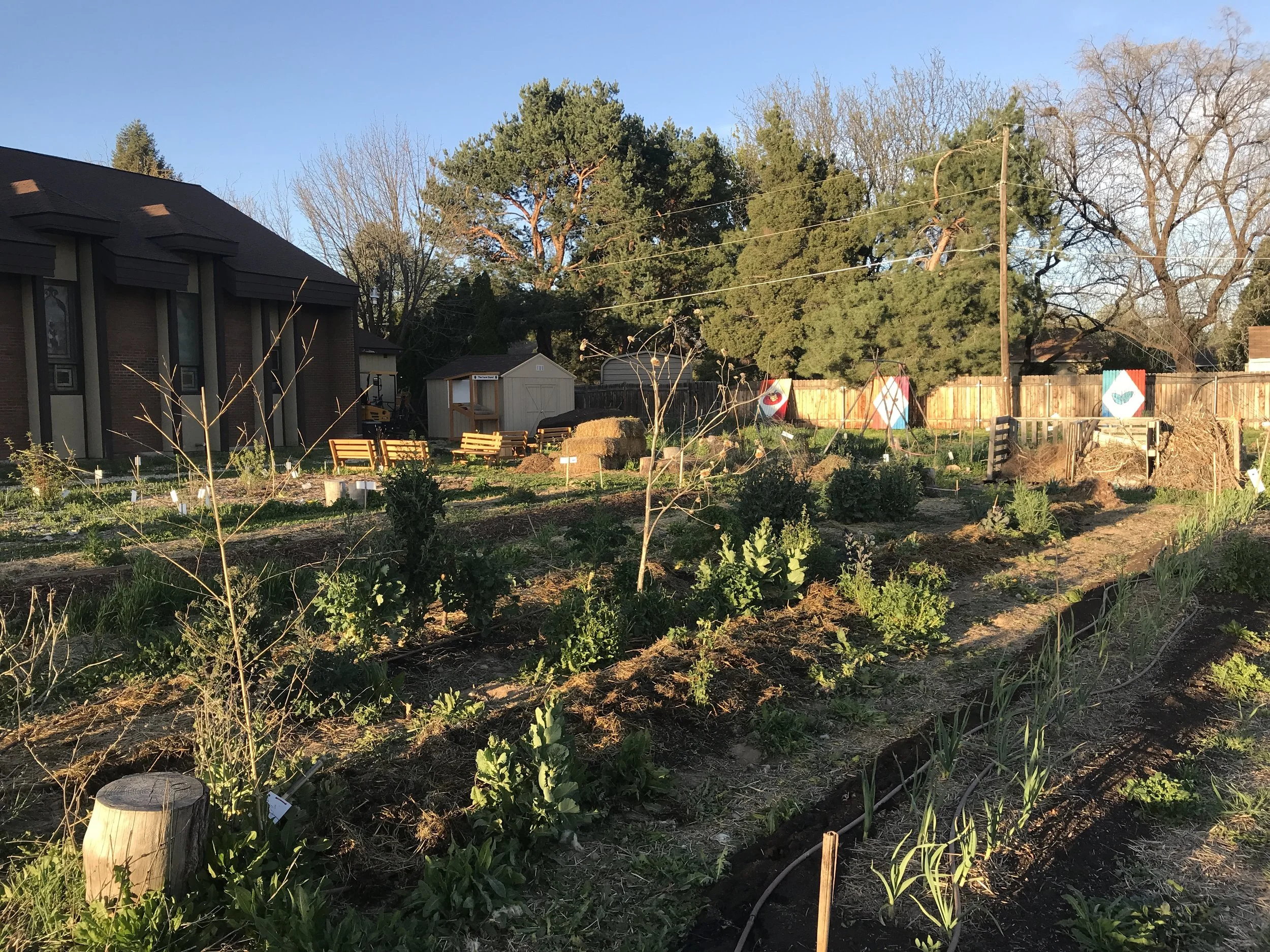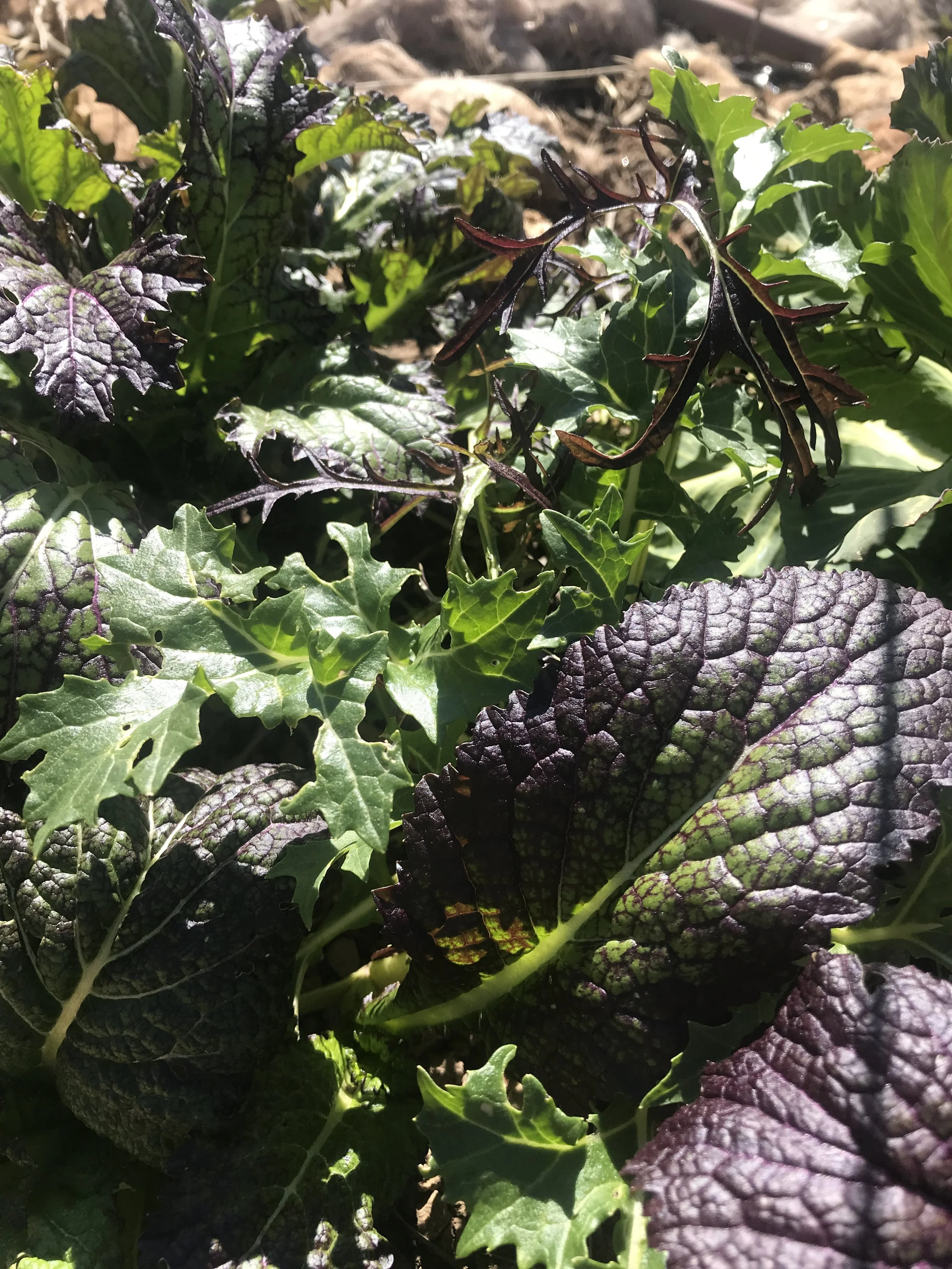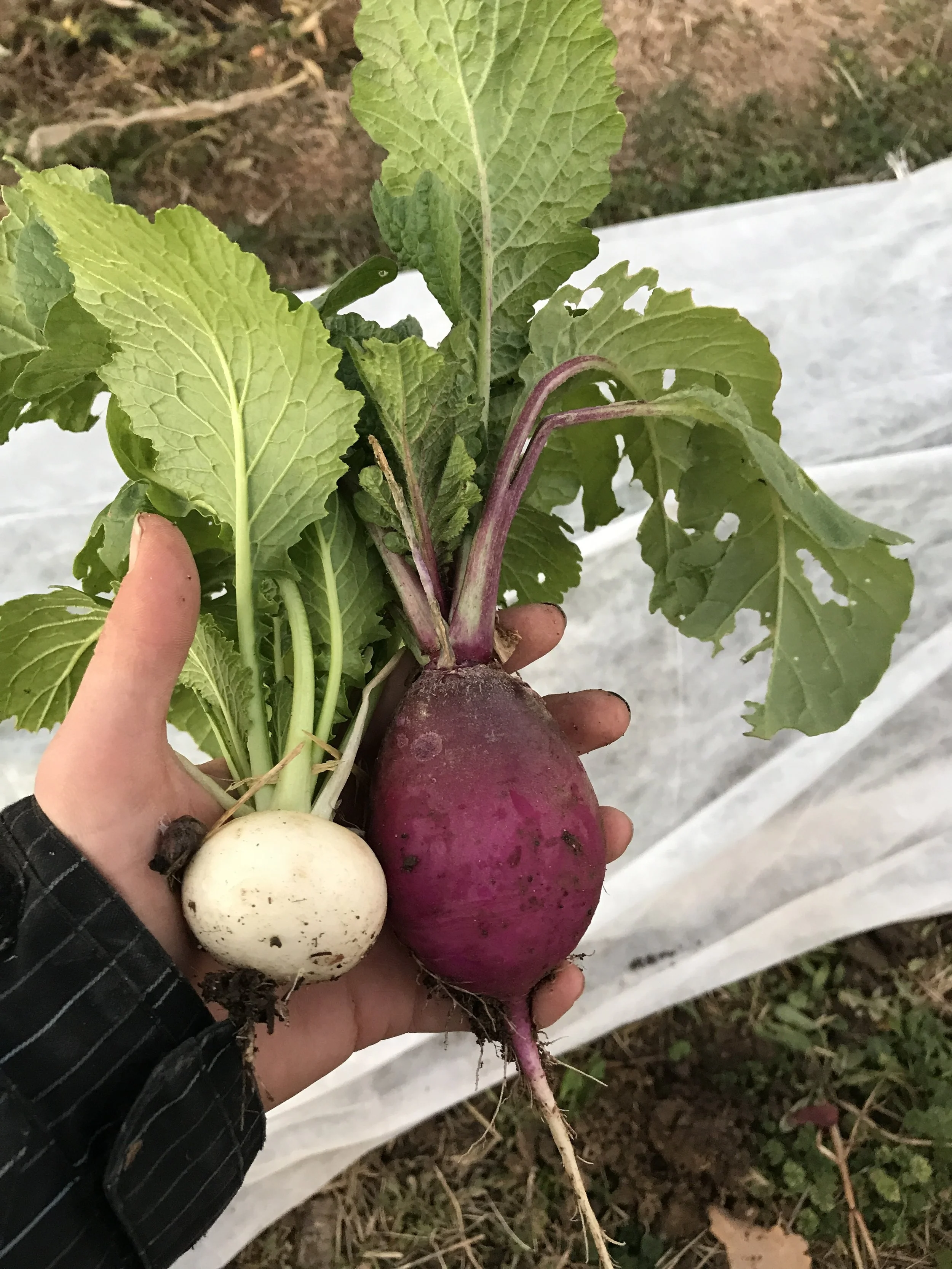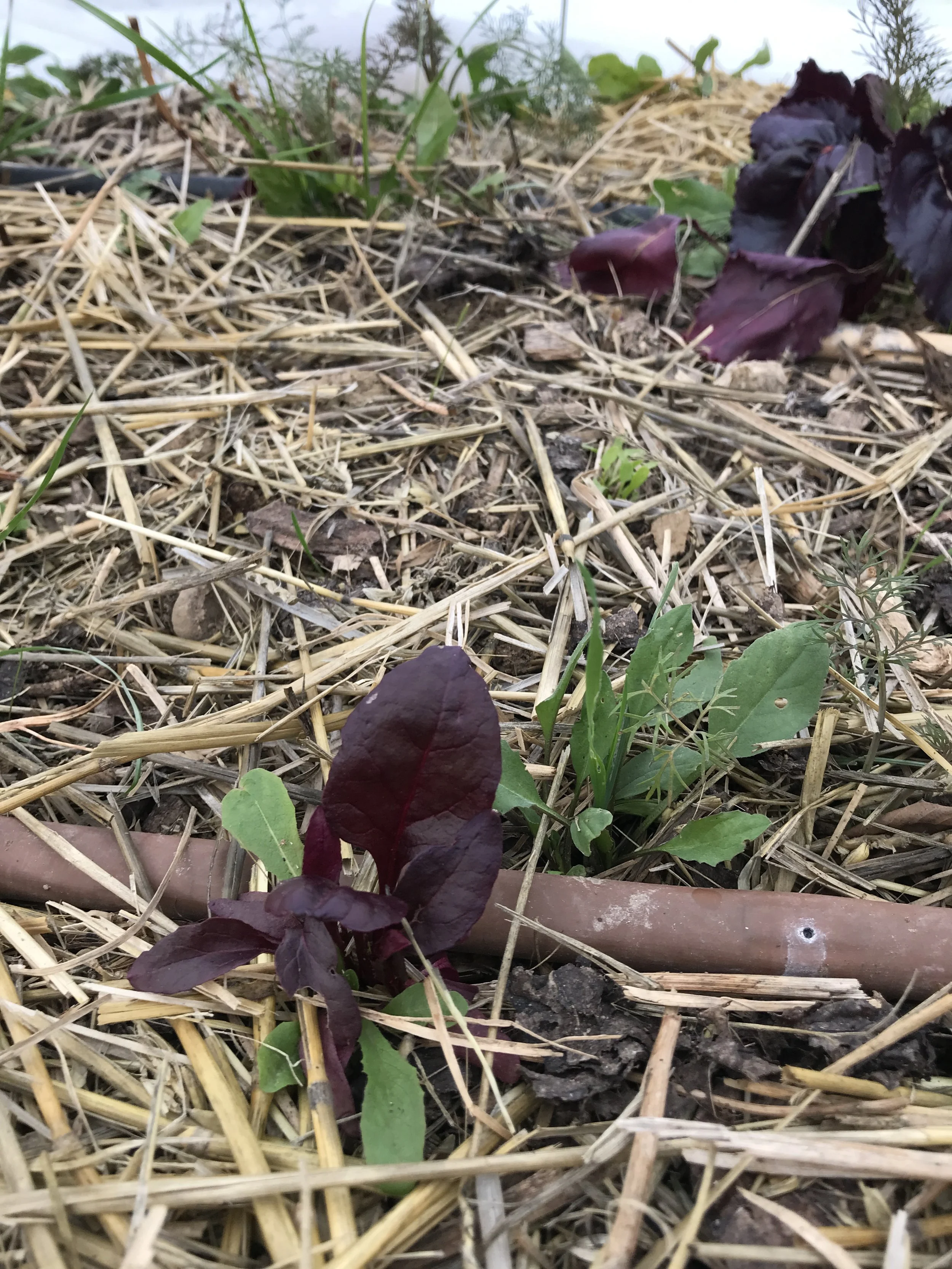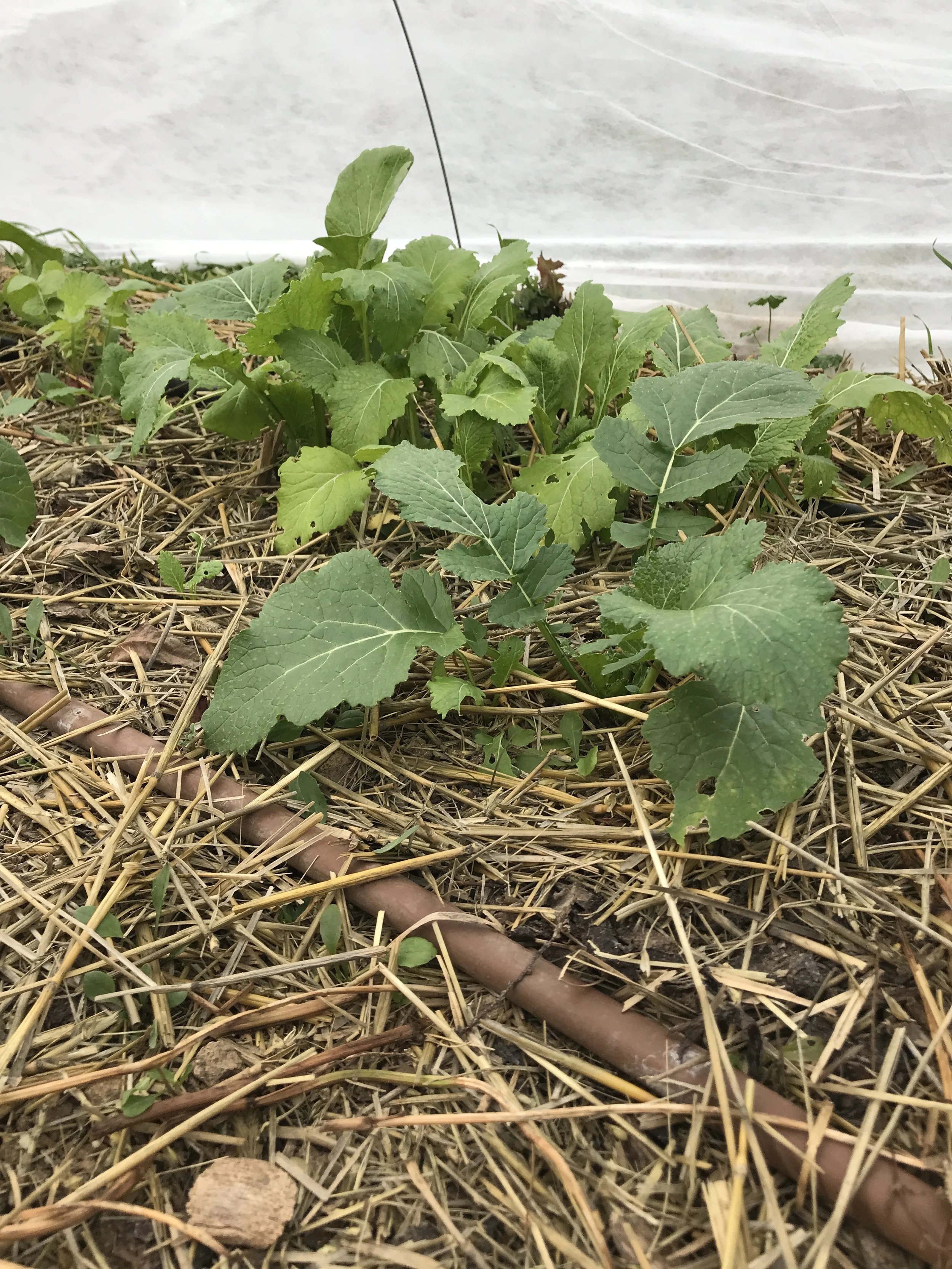Spring Gardeners’ Newsletter
Overwintered No-Till Garden
Collaboratively written by Seth Tanner of BSU - with the Work U Program and Mary K
April 18th, 2024
How’s it Growing
April is a great time to start seeds indoors and get a jump on the gardening season. For some of us it’s round 2 or 3 of seed starting indoors. We are about 5-6 weeks out from the last frost in our growing zone. Starting seeds indoors can be a great way to extend the gardening season by giving your plants a head start. For Fall Garden plans, you may want to consider extending your waves of indoor seed starting into May and June. In so doing, you can shelter cold-loving long day-to-maturity crops from the high temps we’ve already gotten a taste of.
Overwintered SRSC Spicy Mustard Mix - protected by low-temp row cover from Johnny’s Seed Co.
What crops would you grow to extend into the Fall? Cabbage, broccoli, cauliflower, and kale among others.
We’ll delve into overwintered crops more later this season, but for now, feast your eyes on this patch of Spicy Mustard Greens - so freaking good! These are the garden treats available to community gardeners braving the cold mornings and dressing in layers to adapt to temps jumping into the 80s!
Seed Starting Basics
When starting seeds indoors, fill the pots of the starting tray with damp seed starting mix rather than garden or potting soil. Seed-starting mixes are typically designed to provide a lightweight, sterile medium that promotes seed germination and early seedling growth. Consider adding worm castings in with the starting mix to enrich soil nutrients, boost microbial activity, and condition soil.
To plant seeds, make a small indent in the starting mix of each pot and gently add 2 seeds to the indent. Top the mix of every pot with a thin layer of vermiculite to improve soil structure, insulate soil, and aid germination. Don’t forget labels.
Be sure to check your soil temperature indoors for warm-season vegetables. Humidity domes, grow lights, and heating mats can help maintain soil temperatures between 70-75 degrees Fahrenheit. Learn more at Garden Stead.
Peeved off over Damping off?
Damping off is a soil-borne fungal disease that affects seedlings, causing the rotting of stem and root tissues at and below the soil surface of the young plants.
Three methods to prevent damping off disease:
Watering seeds from the bottom
Covering seedlings in Perlite
Fill a spray bottle with Chamomile tea and apply to the soil while filling the pot, or to the surface when seedlings emerge
Learn more at Garden Path
Frost Management
Best radishes and turnips to date - planted September 23, harvested in the winter!
Fall planted beets, turnips, chervil, arugula
Fall planted turnips
Boise’s last frost date projects as April 30th, but can extend to May 10th. In other words, gardening is upon us, friends. As plots begin to take shape for the 2024 season let’s take a look at a few tools to manage our last few weeks of challenging, but potentially rewarding, colder weather.
Learn more at Dirt Magicians
Covering vulnerable plants with row covers, cloches, cold frames, or hoop houses
Add extra mulch around plants
Water generously before a frost to keep plants warmer through the night
Monitor weather forecasts
Bring potted plants indoors
Prune frost-damaged growth and remove any dead vegetation
Install wind protection like fences, brick walls, raised beds, windbreak netting, trees, shrubs, trellises or arbors
Avoid fertilizing before frost
Plant in raised garden beds
Select frost-tolerant plants
Preparing for the Warmer Months
There are a few essential “Must-Haves” and “To-Dos” that come with maintaining a good garden year after year. The first thing any good garden requires for an optimal growing season is a good cleaning. It seems that no matter how tidy a garden is left, winter always brings with it a mess. This includes pruning parts of plants that have been damaged and removing vegetation that has died. How is the soil? Did you know that most garden programs recommend testing the soil every 3-4 years? If the soil of a garden does undergo testing, then make any necessary amendments. Even if the soil is not tested, it can still be beneficial to mulch all gardens at the start of the gardening season. The final step of preparing for a bountiful garden is to make a detailed plan. While making a garden plan, consider what vegetables are of the highest priority, and how much of each will be desired. Learn more at Growing in the Garden.
Sources
